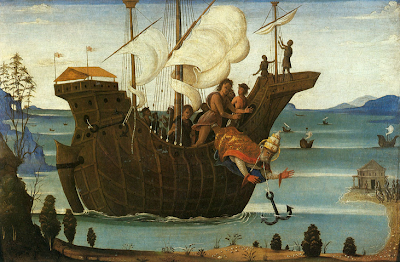 |
| My childhood home at the Phillips Farm in New Hartford, Connecticut. |
I wrote this several years ago, but I post it nearly every year because I love to remember.
-----------------------------------------------
For me it’s impossible to think of Thanksgiving without thinking of Grandpa and Grandma Phillips when they lived at the farm in Connecticut. Of course, childhood memories may change with the passing of years. Some of the details may get blurred. But there are so many happy memories of family gatherings, with Grandpa presiding at the head of it all and Grandma seeming to move constantly between her stove, the pantry, and her place at the table.
Could it have been normal to have had snow by Thanksgiving? When I was little it always seemed as though there was snow on the ground at that time, but maybe it’s my imagination. I do remember how warm it would seem when I went into Grandma’s kitchen, especially on Thanksgiving morning. No matter how early I went in, she would already have been working for hours on what always seemed like the biggest turkey I’d ever seen. I don’t know how she did it with that ancient wood-burning stove she had. Of course, everyone would bring more food when they came – different vegetables, various desserts – but the centerpiece was always Grandma’s turkey. And the heavenly smell which all of that made – it never seemed to be able to be duplicated at any other time of the year.
How did we all fit in their kitchen and living room? There were loads of us, but we found room. And Grandpa was always insistent that we all had to be at the same table, so the big oval kitchen table would get other tables added to it, stretching through the double door into the living room and turning the corner down to the far end. We may not have been able to see everyone at the same time, but we were all at the same table – and Grandpa loved that. I’ve tried to remember how many of us there would have been in those days – certainly more than fifty, with all the grandchildren.
Other than the big oak table, the most important piece of furniture in Grandma’s kitchen was the china cabinet. It was from there that we took out the treasures we used on Thanksgiving Day. Nana’s beautiful Bavarian china set would be used. The little green candy dishes, with gold leaf on the edges, would be filled with mints and placed at different places on the table. Of course, I’d try to figure out where I’d be sitting, so that one of those little green dishes would be near my place. And I remember my Aunt Alice’s fruit arrangements! As a little boy, I was amazed that she seemed to be able to build the fruit up so high that it looked like it was balancing in mid-air.
I can picture it all, and it seems almost like yesterday that we were all together. I can see Grandma at the stove, and I can picture her pantry with the sink at the end of it. I can hear the sound of their little dog Chippy, his nails clicking on the linoleum floor, trying to keep out of the way. I can see Grandpa in his chair, so happy that his family was all together in one place on his favourite holiday. I can see all of us cousins together – lots of little children excited and wanting to help, but really getting underfoot. And I can remember Grandma trying to come up with jobs to keep some of us busy, and she’d go through all the names until she got to the one she wanted. I used to laugh so hard – and she would, too – when she would start in with “George… Johnny… Earl… Denny… I mean, Chris, why don’t you run outside and see if you can find some pretty berries to make a centerpiece for the table, and Alice… I mean Linda, you can go and help.” And out we’d go, thinking we were on an important mission – not realizing that it was her way of clearing a couple of little ones out of the kitchen so she could have a bit more room to get things prepared. And when we’d come back with some orange berries on a branch and a couple of dried milkweed stalks, Grandma would exclaim about what a beautiful arrangement it would make!
What wonderful times those were, and I think we knew it, even then. How God blessed us as a family. Of course, there have been difficult times, and we miss those whom God had called to be with Him. But we have known God’s love through the love of our family, and we must continue to make memories so that today’s little children can recall them when they are grown with grandchildren of their own.
The family has expanded tremendously, and although miles separate us, the bonds of love keep us together. And when I pray for those of our family who have died, it reminds me that we are all still one family – whether on this earth or in God’s eternal keeping. Even though we may not be able to see everyone whom we love, God sees us all – and He keeps each and every one of us in His divine heart.


















